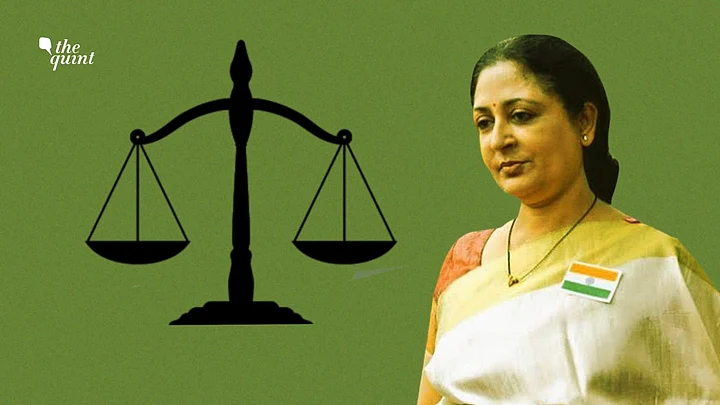The capricious collegium system of judicial appointments has claimed another victim.
The recommendation to transfer Madras High Court Chief Justice VK Tahilramani to the Meghalaya High Court, even as Chief Justice, is a demotion any which way you look at it.
Meghalaya is a smaller High Court, which is much lesser by way of prominence and history than the Madras High Court and to be transferred from one to the other, against her will, is very much a message being sent by the collegium.
After her representation against the transfer was rejected, Justice Tahilramani has resigned, seemingly in protest against her treatment.
The collegium has a long and sordid history of treating appointments to smaller High Courts as a “punishment posting”, discrediting both itself and the High Courts in question with their actions. One only needs to look at the circumstances of the transfer of Chief Justice BK Roy from the Punjab and Haryana High Court to the Sikkim High Court and the transfer of Chief Justice PD Dinakaran Premakumar from the Karnataka High Court to the Sikkim High Court to understand the punitive nature of such postings.
What Is Justice Tahilramani Being “Punished” For?
But what is Justice Tahilramani being “punished” for? The collegium resolutions transferring her and turning down her representation against the transfer are both laconic, offering no reasons whatsoever for the move. If such an order had been passed by any other authority, even against a lower division clerk in a panchayat office, it would have been set aside by the court in a heartbeat for lacking reasons.
While transfer is a feature of public service and one can’t really demand a place of one’s choosing, the court has repeatedly clarified that transfers by way of punishment, in bad faith, or vitiated by arbitrariness will not be countenanced.
Even in the context of judicial transfers, the court has said that such transfers cannot be done in a manner that is punitive in measure and yet, the circumstances show that they have repeatedly been carried out in this manner.
Along with Justice Tahilramani, the transfer of two other judges, Justice PV Sanjay Kumar of the Hyderabad High Court and Justice Ujjwal Bhuyan of the Gauhati High Court has been a matter of controversy as they are effectively being demoted from being senior judges in their parent High Courts to much less senior judges in another High Court.
The “better administration of justice” reasons offered make little sense as the Bar Associations of these respective High Courts have shown that there is no substance to this claim.
In the absence of reasons and facts, we are left to speculate. Was it something she did in her tenure as Chief Justice of the Madras High Court? Was it something she did against members of the present ruling dispensation in her time as the Bombay High Court judge? We are left to only read the tea leaves and draw our own conclusions.
‘Victimisation’ for Her Judgement in Bilqis Bano Case
In this context, one can’t help but draw parallels with the ill-treatment of Justice Jayant M Patel in 2017. Or for that matter the ongoing victimisation of Justice Akil Kureshi.
Both these judges were reputed for their honesty and fearlessness in standing up to the Narendra Modi-led Gujarat government and it is not hard to draw the obvious conclusion in Justice Tahilramani’s case too, that she is being ‘victimised’ for her judgement in the Bilqis Bano case.
If that does sound far-fetched, it is for the collegium to present the facts and clarify. After all, applying the rules of evidence, failure to produce the best evidence in one’s possession permits the drawing of an adverse conclusion against such a person.
On the last occasion, when controversy broke out over the transfer of Justice Patel, the collegium responded by at least uploading resolutions on the Supreme Court website. While it did allow for a small measure of transparency, if the collegium wants the public to retain any modicum of faith on its independence, it must immediately make public the reasons for the transfer of Justice Tahilramani.
If it fails to do so, we must assume the worst. If the collegium is incapable of or uninterested in protecting the independence of the judiciary and standing up for the interests of independent-minded judges, it should be wound up entirely as a meaningless charade.
If the Union Government is going to be taking all the relevant calls on who gets to be a judge and who serves where, perhaps it is best that the senior most judges of the Supreme Court and High Court not waste their time and energy on being part of the process and devote their energies to the administration of justice.
By failing to be transparent and open about its reasons, whatever stamp of legitimacy the collegium gives to the appointment of judges to the High Court and Supreme Court, is lost.
(Alok Prasanna Kumar is an advocate based in Bengaluru. This is an opinion piece and the views expressed above are the author’s own. The Quint neither endorses nor is responsible for the same.)
